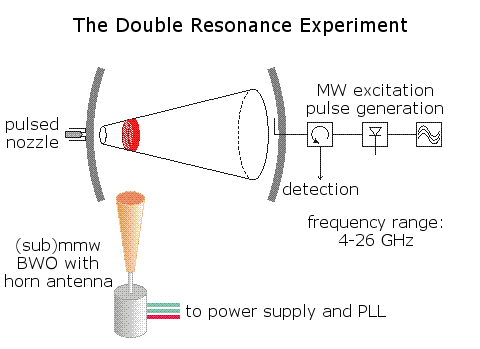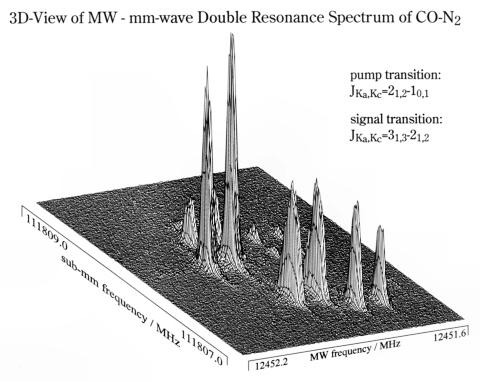![]()
![]()
![]()
Fourier transform microwave (FTMW) experiments measure rotational transitions within the vibrational ground state of van der Waals complexes. Terahertz (THz) techniques can be utilized to measure transitions from these rotational states to low-lying, excited intermolecular vibrational states.
When a microwave radiation source is combined with a (sub)mmw radiation source, rotational transitions within these excited intermolecular vibrational states can be probed.

In our double resonance experiment, the (sub)mmw radiation is generated by a BWO which is stabilised in a phase-lock loop (PLL). This high-frequency radiation which is coupled into our FTMW chamber using a horn antenna is perpendicular to the microwave radiation and excites intermolecular vibrational modes of the van der Waals complex under investigation (i.e., vibrations that are bending or stretching the van der Waals bond). The microwave radiation excites then rotational transitions within these excited vibrational states. These experiments provide information about the interaction potential farther away from the ground state equilibrium geometry and thus creates a more complete picture of the weak interaction.

![]()
![]()